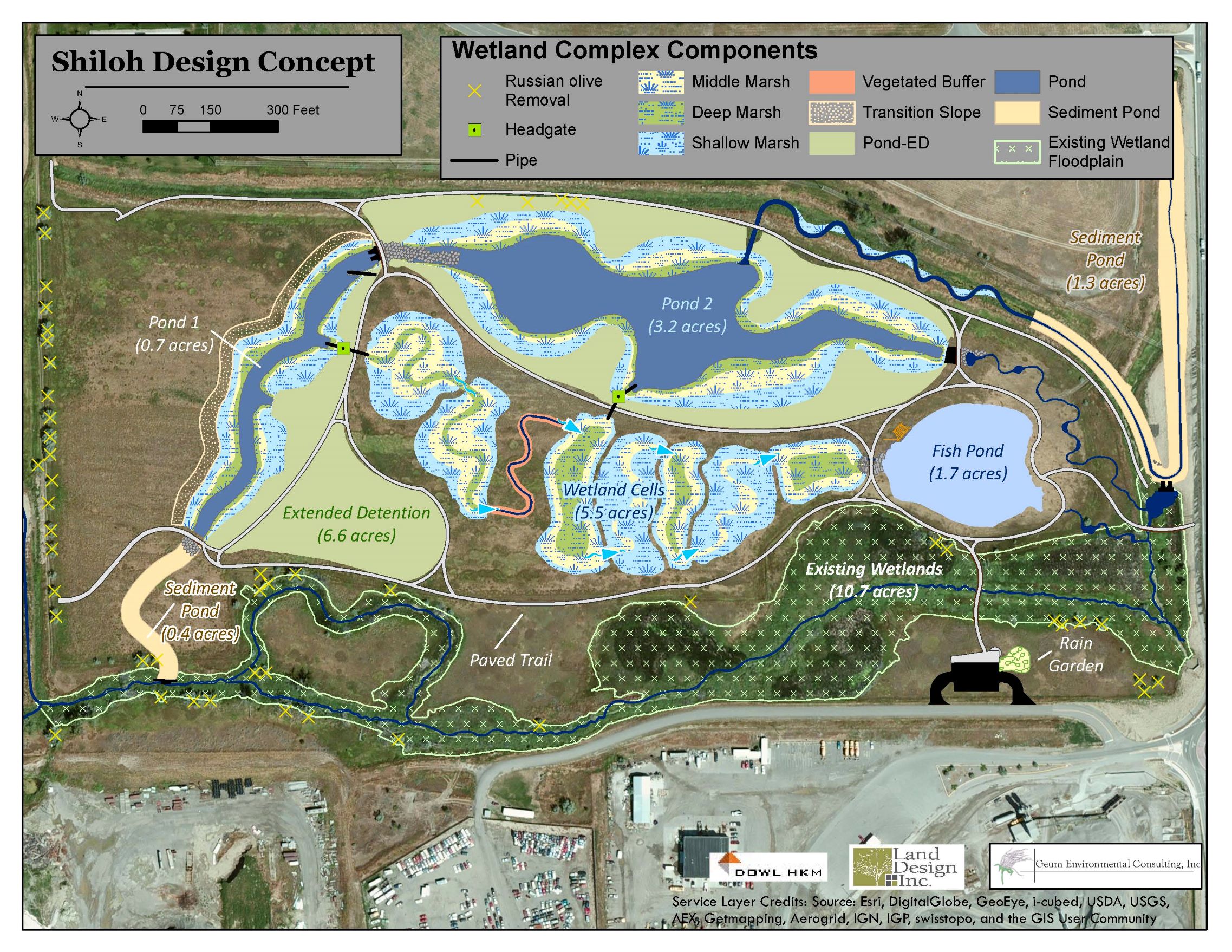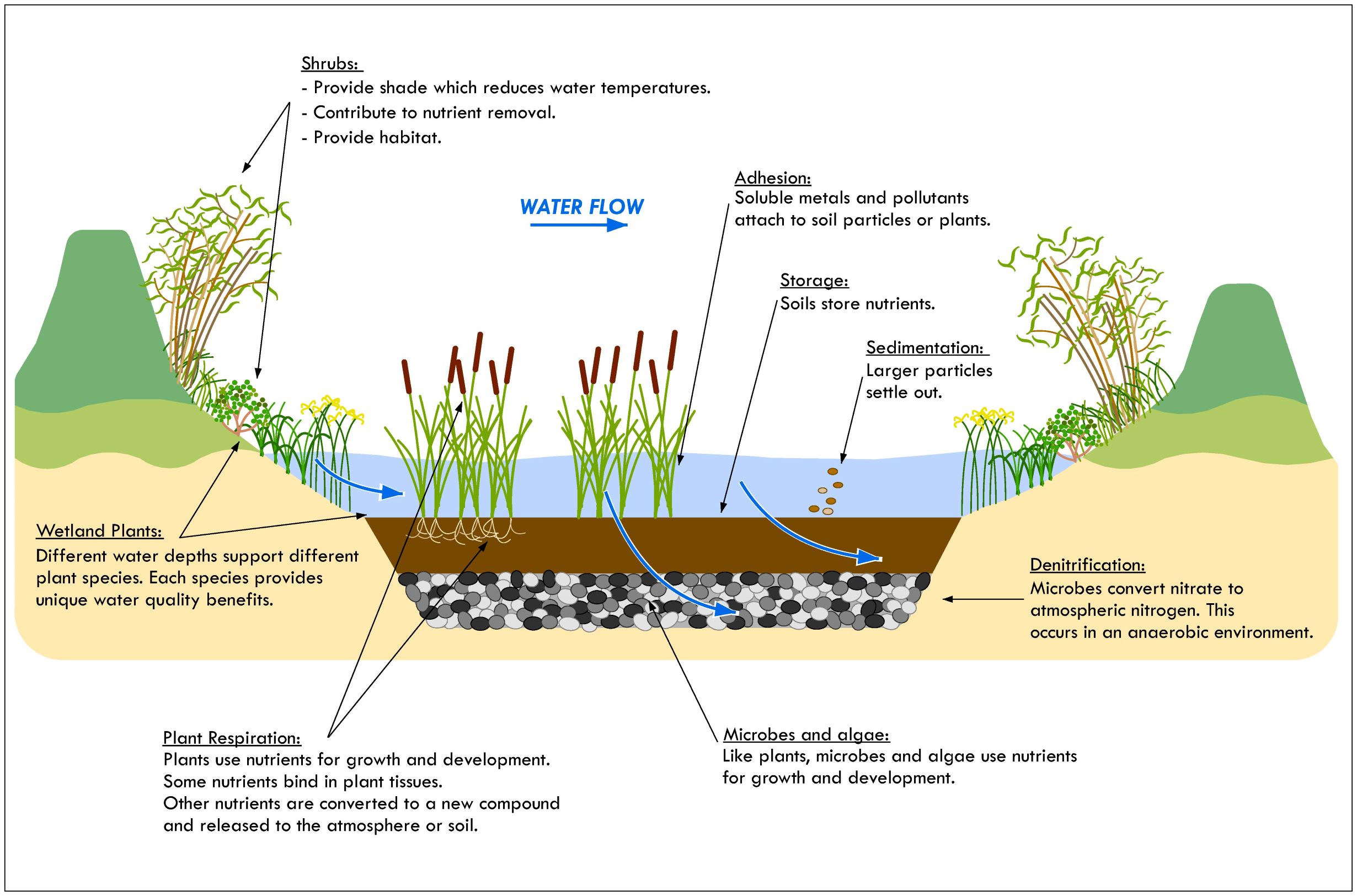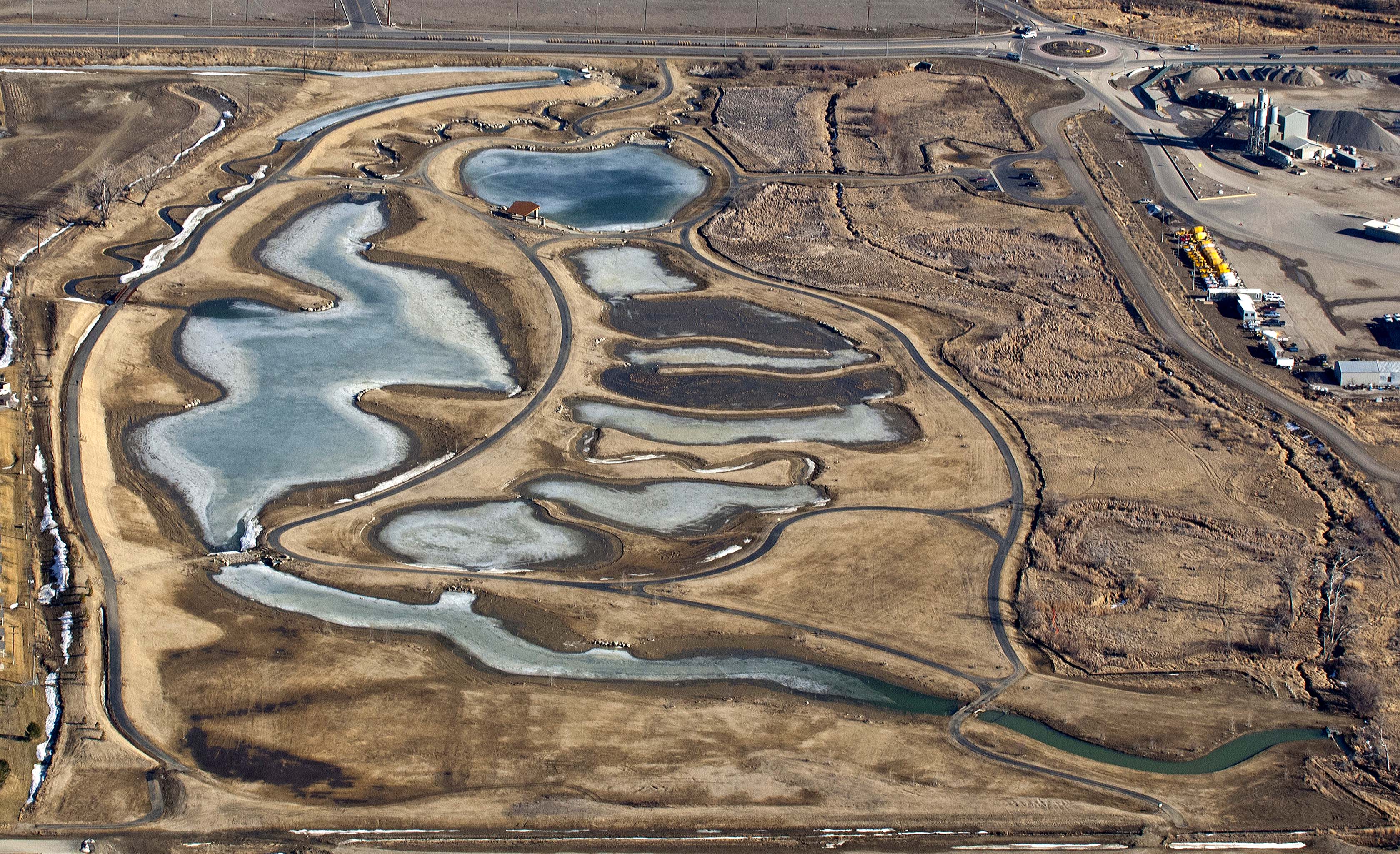Project Summary
Geum worked as a subcontractor to DOWL, LLC to help design wetlands within the Shiloh Conservation Area (SCA) on 70 acres of land owned by the City of Billings. The project was completed in the fall of 2014. The goals of this project included:
- Treat stormwater from upstream agricultural lands and runoff from new developments
- Provide flood attenuation during large storm events
- Provide a recreational area for the City’s residents as the City expands
Geum designed wetlands for water quality improvement, including planting plans, grading plans, and substrate types. Geum also prepared the Joint Application for relevant permits (MT SPA 124, Clean Water Act Section 404 Permit and 401 Certification, and MT 318 Authorization). Geum also provided construction oversight for wetland construction and wetland planting.
Project Significance
The SCA provides a unique opportunity to evaluate new techniques for stormwater management in Montana. To address water quality and flood attenuation, the site includes several features such as sediment ponds, detention ponds with wetland fringes, and wetland cells. Wetlands have been divided into three planting zones relative to water depth. Native species range from those that prefer deeper waters such as hardstem bulrush (Schoenoplectus acutus) and softstem bulrush (Schoenoplectus tabernmontani) to those that prefer shallow waters and/or moist soils such as common spikerush (Eleocharis palustris) and Arctic rush (Juncus arcticus). The seven wetlands include deeper cells encouraging biouptake processes and shallower cells with a gravel lining to encourage microbial activity. Native woody vegetation such as Bebb willow (Salix bebbiana) and Red-osier dogwood (Cornus sericea) is strategically placed around water bodies to decrease temperatures, potentially decrease browse from geese and create habitat. The site design incorporates a water control system that allows for fine-tuned control of flows and water surface elevations in all water bodies and wetlands. The entire site can be drained for maintenance purposes, or can be used to store water during large flow events. Additionally, water control allows the option to drain wetlands to discourage organic matter build up and monoculture development. Several water quality sampling access points have also been incorporated to allow easy and frequent monitoring.



